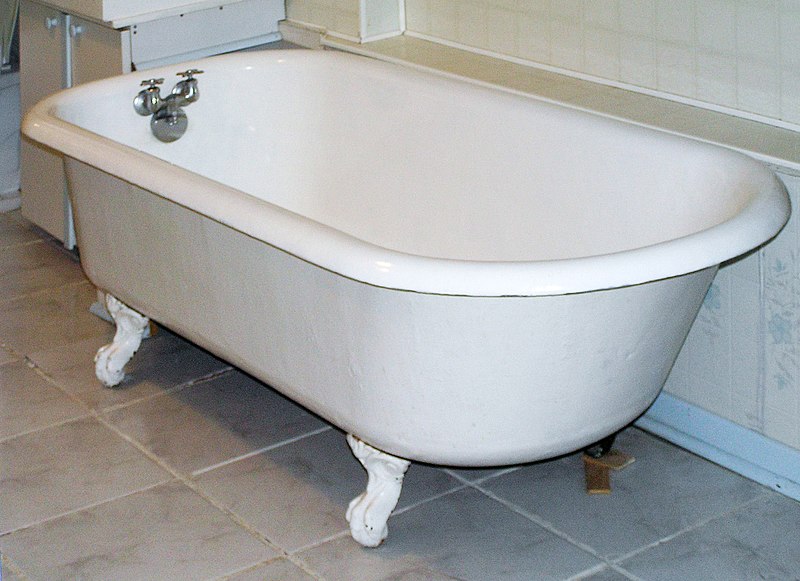The publisher is making a number of great pointers relating to How to Install a Bathtub in general in this post on the next paragraphs.

Mounting a tub isn't specifically brain surgery, yet it does need strong plumbing, carpentry, as well as occasionally, tiling skills. Changing an old tub with a brand-new one is also a moderately hard task. If the old tub is conveniently available, the project can move immediately; if you have to open up a wall to get rid of the old tub and place the new tub, the job is a lot harder. In either situation, the project is within a home handyman's skills, although you will need an assistant to leave the old bathtub and also embeded in the new one. Ensure you have actually certified yourself for the work as well as fit attempting it. As opposed to hiring a contractor to take over a halfway-completed task, it is far better to take into consideration utilizing one before you begin. Opportunities are you might require a specialist plumber to make tube connections.
This write-up will certainly help you install a new bathtub in your shower room if you have actually already purchased a brand-new bathtub and also do not require to change the setup of your previous water pipes.
Your devices and also material checklist ought to make up the following:
Getting ready for the Installation
Firstly, the supporting frame provided with the bath needs to be fitted (if needed) according to the manufacturer's guidelines. Next off, fit the faucets or mixer to the bath tub. When suitable the faucet block, it is necessary to ensure that if the faucet features a plastic washer, it is fitted between the bathroom and also the taps. On a plastic bathroom, it is also sensible to fit a sustaining plate under the taps unit to avoid pressure on the bath tub.
Fit the versatile faucet adapters to the bottom of both faucets making use of 2 nuts and also olives (in some cases supplied with the bathtub). Fit the plug-hole electrical outlet by smearing mastic filler round the sink outlet hole, and afterwards pass the electrical outlet via the hole in the bathroom. Use the nut supplied by the producer to fit the plug-hole. Analyze the plug-hole electrical outlet for an inlet on the side for the overflow pipeline.
Next, fit the end of the versatile overflow pipe to the overflow outlet. Afterwards, screw the pipeline to the overflow face which must be fitted inside the bathroom. See to it you utilize all of the supplied washers.
Attach the trap to the bottom of the waste outlet on the bath tub by winding the thread of the waste electrical outlet with silicone mastic or PTFE tape, and also screw on the trap to the electrical outlet. Connect the bottom of the overflow tube in a comparable manner.The bathroom ought to now be ready to be suited its final setting.
Removing Old Taps
If you need to change old taps with new ones as a part of your installment, after that the first thing you ought to do is disconnect the water system. After doing so, activate the taps to drain pipes any type of water staying in the system. The procedure of removing the existing taps can be fairly bothersome as a result of the limited accessibility that is typically the situation.
Make use of a basin wrench (crowsfoot spanner) or a tap device to reverse the nut that links the supply pipelines to the faucets. Have a towel all set for the continuing to be water that will certainly come from the pipes. Once the supply pipes have been removed, utilize the exact same device to loosen the nut that holds the taps onto the bath/basin. You will certainly require to stop the solitary taps from transforming throughout this process. As soon as the faucets have actually been removed, the holes in the bath/basin will need to be cleaned of any type of old sealing substance.
Before proceeding to fit the brand-new faucets, compare the pipe connections on the old faucets to the new faucets. If the old faucets are longer than the new taps, after that a shank adapter is needed for the new taps to fit.
Installing the Bath tub
Using both wooden boards under its feet, place the bath tub in the needed setting. The wooden boards are practical in evenly spreading out the weight of the bath tub over the location of the boards rather than focusing all the weight onto four small points.
The following objective is to guarantee that the bathtub is leveled all round. This can be attained by inspecting the spirit level and also changing the feet on the tub till the spirit level reviews degree.
To mount taps, fit all-time low of the outermost flexible faucet port to the appropriate supply pipeline by making a compression join; after that do the exact same for the various other tap.
Turn on the supply of water and also check all joints as well as brand-new pipework for leakages and also tighten them if necessary. Fill up the tub as well as also inspect the overflow outlet and also the regular outlet for leakages.
Ultimately, fix the bath paneling as described in the maker's instruction manual. Tiling and securing around the bathtub should wait till the bath tub has been utilized at least when as this will certainly settle it into its final setting.
Suitable New Taps
If the tails of the new faucets are plastic, after that you will certainly require a plastic port to avoid damages to the string. One end of the adapter fits on the plastic tail of the faucet and also the other end supplies a link to the current supply pipelines.
If you require to fit a monobloc, then you will certainly need reducing couplers, which connects the 10mm pipeline of the monobloc to the conventional 15mm supply pipe.
Next off, position the tap in the placing hole in the bath/basin guaranteeing that the washing machines are in location between the tap and also the sink. Secure the faucet in position with the supplier offered backnut. When the faucet is safely in position, the supply pipelines can be linked to the tails of the faucets. The faucets can either be linked by utilizing corrugated copper piping or with typical tap connectors. The former kind needs to be connected to the faucet ends first, tightening just by hand. The supply pipes can later on be linked to the various other end. Tighten up both ends with a spanner after both ends have actually been connected.
Tiling Around the Bathtub
In the location where the bathroom meets the floor tile, it is required to secure the accompanies a silicone rubber caulking. This is very important as the fitting can relocate sufficient to break a stiff seal, causing the water to penetrate the wall surface in between the bathroom as well as the tiling, leading to issues with dampness and possible leaks to the ceiling listed below.
You can select from a variety of coloured sealants to blend in your fixtures and installations. They are offered in tubes and also cartridges, and also are capable of sealing gaps as much as a size of 3mm (1/8 inch). If you have a bigger gap to load, you can fill it with spins of soaked newspaper or soft rope. Bear in mind to always fill up the bathtub with water prior to sealing, to enable the motion experienced when the tub remains in use. The sealer can crack fairly early if you do not consider this movement before securing.
Additionally, ceramic coving or quadrant tiles can be utilized to edge the bath or shower tray. Plastic strips of coving, which are easy to use as well as cut to size, are likewise quickly available on the marketplace. It is suggested to fit the tiles utilizing water-resistant or water-proof sticky and grout.
How to Install or Replace a Bathtub
Find Your Dimensions
The first step in any bathtub installation or replacement is to select the right size tub for your bathroom. Start by measuring your existing bathtub’s alcove from wall to wall. The standard size for bathtubs is around 5 feet long and 30 or 32 inches wide. Purchase the size that’s closest to your previous tub.
After you’ve measured, you’ll need to figure out what type of tub you need. Face the alcove. If the drain is on the right-hand side, you’ll need a right drain tub. If it’s on the left, get a left drain tub. Easy enough, right?
Disconnect the Water Supply and Drain Assembly
Before you can start on your removal, make sure that you turn off the tub’s water supply. Some bathrooms have a shutoff valve, but if you don’t see one, you’ll need to turn off the supply at your house’s water main. Once the water’s off, open the valves to release any remaining air in the supply lines.
Then, disconnect the tub drain flange. This process varies based on the type of drain you have, but in most cases, you’ll need a drain flange removal tool to perform this task. If you’re feeling handy, you might be able to use a pair of needle-nose pliers to twist and pull the flange.
Now comes the fun part. In order to disconnect the drain assembly, you’ll need to be able to get to the space underneath the tub. You might need to access the tub drain from a crawlspace or a basement. Don’t forget to take a pipe wrench with you, as you’ll need it to loosen the pipe at the connection.
Cut Out the Old Tub
After removing the drainpipe assembly, you can take out the old bathtub. Cut a strip above the tub edge in the wall surrounding the bathtub that's about 6 inches in height. The tools you need here may vary depending on the type of wall surround you have in the alcove. If you’re cutting drywall, use a drywall saw and remove the section of the wall all the way down to the studs. If you have tile, you’ll need to use a grinder with a diamond blade to cut through the grout line. Then, use a chisel to remove the individual tiles. Take care here not to cut through any studs.
Find the tub flange. Remove the screws that attach the flange to the studs in the wall. At this point, the tub should be freed from the wall.
Once you’ve removed the flange, use a utility knife to cut away the caulk between the tub and the floor. When this is done, you should be able to lift the tub up and out of the alcove. Keep in mind that, depending on what it’s made of, the old tub could be tremendously heavy. You should plan to have a friend help you move it just in case.
Install the New Tub
Before you make any adjustments to the area, place the new tub in the alcove to make sure it fits properly and that the tub drain lines up with the P-trap underneath the floor.
Remove it and install a 2 x 4 ledger board. Measure the tub’s flange, then mark that height on the wall. Screw the ledger board to studs in the wall. This will help to support the weight of the tub.
Once the ledger board has been installed, go ahead and secure the drain to the tub. For this step, you’ll need some plumber’s putty. Roll a small amount of putty in your hands and wrap it around the underside of the drain flange. Push the drain into the tub from underneath the tub.
When the drain has been attached, connect the overflow drain. To do this, you’ll place the gasket on the overflow elbow and move it behind the tub. Once that’s on, connect the overflow pipe and the drainpipe, but take care not to overtighten.
Secure the Tub
After the connections are in, it’s time to set the tub in place. Before you start, make sure the flange lines up with the markings you made in Step 4. Because the ledger board holds the tub in place, it’s important that it matches up. If not, you’ll need to remove it and readjust.
Once your measurements line up, attach the flange to the studs on all three sides of the wall. Please note that you should not screw the flange to the wall. Instead, you should use roofing nails because they won’t rust over time. When the tub is in place, install the baseboard and the molding in front of and around the tub.
Repair and finish off the drywall or tile that you cut in Step 3. If you’re installing a fiberglass bath surround, now’s the time to adhere it to the alcove.
Then, enjoy your tub! While all these steps might seem intimidating, removing and installing a new bathtub is a relatively easy DIY project that can be completed in a single day. And now, when you settle in for your next bubbly soak, you can enjoy your bath without the distraction of a tub in disrepair.
https://www.homeserve.com/en-us/blog/how-to/bathtub-replacement/
:max_bytes(150000):strip_icc()/installing-a-tub-or-shower-surround-2718986-hero-40160398595d4544b639b3398cdb247c.jpg)
Do you like reading about Tools You Need to Install a New Bathtub ? Post feedback down the page. We will be delighted to hear your reactions about this blog. We hope that you come back again before long. Do you know another individual who is very much interested in How to Install a Bathtub? Be sure share it. We enjoy reading our article about How to Install a Bathtub: Install an Acrylic Tub and Tub Surround.
Plumbing emergencies? Our experts await.
 Daniel Stern Then & Now!
Daniel Stern Then & Now! Val Kilmer Then & Now!
Val Kilmer Then & Now! Mike Vitar Then & Now!
Mike Vitar Then & Now! Danica McKellar Then & Now!
Danica McKellar Then & Now! Rachael Leigh Cook Then & Now!
Rachael Leigh Cook Then & Now!